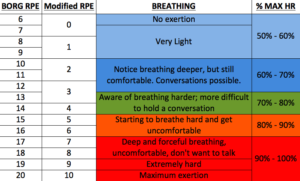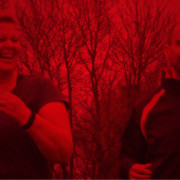How to Run Easy
As a coach one the biggest things I have to teach and remind runners is how to run easy. I originally wrote a post about this in 2018, but feel the need to update it.
When we start running, we tend to run as far as we can at a pace that feels ‘normal’ or ‘comfortable’. We tend to run until we can’t run any more, possibly having a walk break before running again. We build up these runs in distance but tend to keep the pace the same over every run. We improve our times, often in parkruns as they can be run every week (pre-Covid), maybe also in races of a longer distance. However, at some point, we tend to either injury ourselves or our times plateau. This is because we are effectively racing every run.
If you are lucky enough to plateau before injury strikes, we then think that we need to try harder or run further, usually at that same pace we are always running. By doing this, one of three things will happen, we either get injured as we are now racing more; we begin to get disillusioned and fall out of enjoyment with running; or we end up causing illness due to the level of fatigue we build up.
How do we change this?
A lot of runners will run at what they call ‘easy pace’. Being honest, some coaches are also guilty of using this phrase and prescribing paces for easy runs. These paces are often derived from training calculators found on the internet. However, this just doesn’t always work. For example, I can tell someone to run at 9.00min/mi pace as that usually feels easy on flat ground. However, what do they do when they run uphill? 9.00 pace suddenly feels hard. If they run in to a headwind at 9.00 pace that will again feel hard. How many times do you see people writing on Facebook or Strava that they found their easy run ‘really hard today’? If they found it hard then it wasn’t easy!
To get around this we need to forget about an ‘easy pace’ but instead learn how to run at an ‘easy effort’. You need to try to learn how a run feels. If it feels tough then it’s not easy. If it feels steady then it’s probably not easy. It needs to feel easy.
There are a few ways of practising this. Firstly, you need to forget about your pace and cover your watch (unless you need to know the distance, in which case set your watch for easy effort runs so that you can only see distance).
- The Talk Test – you should be able to talk in full sentences. Now that we are allowed to run with others, go for a chatty run with someone of a similar ability and have a good natter. It is often those runs that feel the best, because you are chatting so you naturally slow down.
- Sing – You can sing out loud (less likelihood of you getting kidnapped) or just sing in your head, but mouthing the words. If you can do that, it will control your breathing and keep your effort easy.
- Relax – As you are not running to a certain pace, just relax and enjoy being outdoors. Listen to some lower tempo music so that the beat doesn’t dictate your speed. Maybe listen to an audiobook or podcast instead. Or simply just concentrate on your surroundings and how you feel. You should feel that whilst your legs may get tired as you approach your long distances (remember what is long for one isn’t for another), but your breathing should always remain consistent and relaxed.
- Focus on Your RPE – Rate of Perceived Exertion (RPE) is a scale created by Gunnar Borg to try to give a standardised approach to how you are feeling when exercising (see the scale below. Borg original scale was based on 6-20 but he then simplified it on a scale of 1-10). When running at an easy effort you really want your perception of exertion (how hard you feel you are working) to be in the range of 8-11 of the original scale or 2-3.3 on the newer scale.

- Don’t Overanalyse – I tend to get people to think about effort and not what all of the numbers mean. Some people run to heart rate as in beats per minute (BPM), some people set their watches to heart rate zones (usually set on a percentage of your maximum heart rate. Plans vary through from 3 zones to 7 zones). However, all of these are very personal to the individual and require a very accurate heart rate monitor and the knowledge to be able to spot anomalies, for instance when you are fatigued, running off road, stressed, etc. If you can run to feel then your pace and heart rate will come out in the right areas.
Why do we want to run easily?
The biggest key to running improvement is consistency. To build endurance and fitness you need to be able to increase your mileage. To increase your mileage in a sustainable way you need to run the majority of your runs at an easy effort. To increase your speed when running, you need to practise running faster. However, the stresses this puts through your muscles, tendons and joints means that you cannot always run fast (personally I like to use the word ‘hard’ instead of ‘fast’ as speed is relative to the individual, whereas effort is the same for everyone).
I tend to try to stick to a rule of roughly 80% of easy effort miles (not runs) and 20% harder miles, both in my running and my coaching of runners. I find that this works the best for most people and this theory has long-standing foundations in training (Mo Farah will run upwards of 100 miles a week to compete in 5k & 10k races, but 80% of those miles will be easy effort).
This concept was originally spotted by an exercise physiologist called Stephen Seiler in the late 1990s. He found a consistent pattern when analysing the training of elite athletes across a number of sports such as running, cross-country skiing and rowing. He coined the phrase ‘polarised training’. Basically, you either run easy or you run hard. You will only tend to run at a ‘steady effort’ when trying to practise race pace for longer distances, such as half or full marathons.
Since then, numerous books have been produced on the subject, including 80/20 Running by Matt Fitzgerald. Whilst this is a really good book to get to the science behind why easy effort running and polarised training works for the majority, it does have it’s flaws in that sticking to the training zones and heart rates prescribed can be really frustrating.
So, it’s time to lose the focus on pace and think about effort. Run to feel. If the run says ‘easy effort’ make sure it feels easy. If the run says ‘run hard’ make sure the effort is hard. You only need to look at your watch when practising certain paces, and anyone who is coached by me knows that isn’t that often. You’ll find your easy runs more enjoyable and you’ll find that you’ll then be fresher for your harder runs.
If you read this and think this is challenging, the chances are you are running your easy runs too fast. Now let’s go and practise! Enjoy!
I hope that you can take something away from this blog. I would love to hear your thoughts and I’ve set up a very supportive Facebook Community where like-minded people can share their experiences of life and exercising. Please feel free to join and invite others you know who may be interested.
Want to know more about running, personal training or nutrition?
Do you want a personalised training plan?
Contact me today to ask any questions or to book your FREE consultation
Call me on 07815 044521 or email me at martinhulbertpt@gmail.com
Martin Hulbert
Personal Trainer & Running Coach Leicestershire
MH Health and Fitness Online Community
www.facebook.com/mhhealthandfitness.co.uk
#MHrunners













